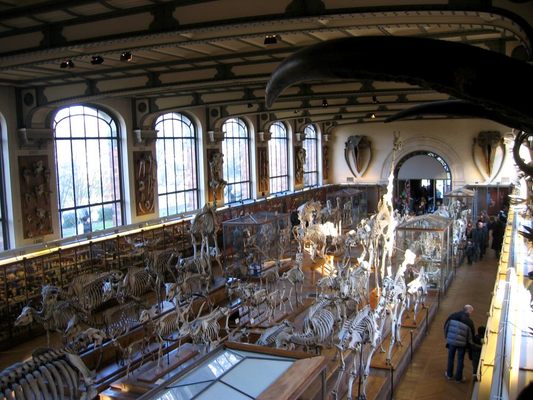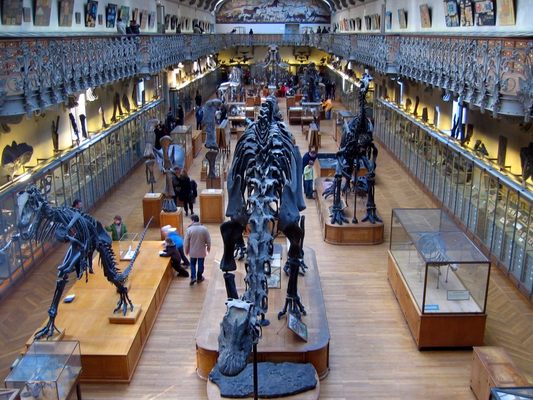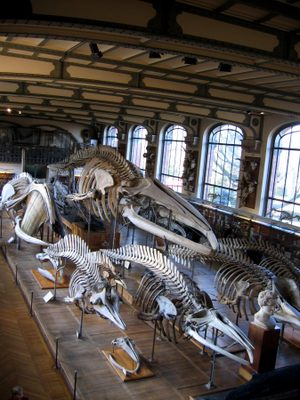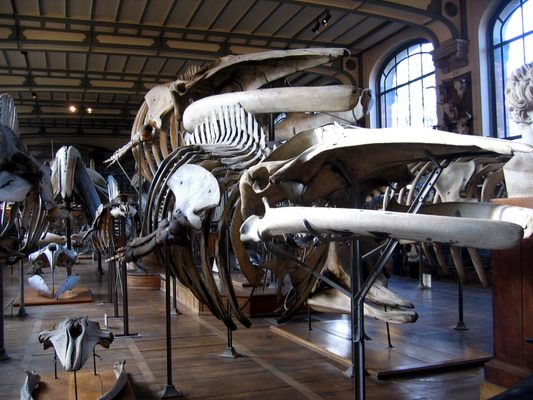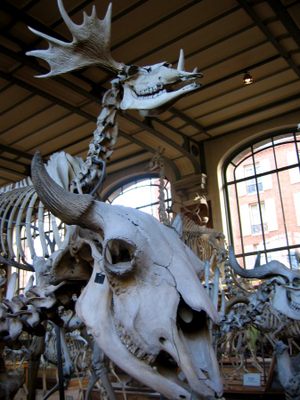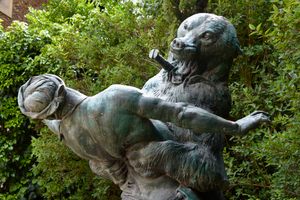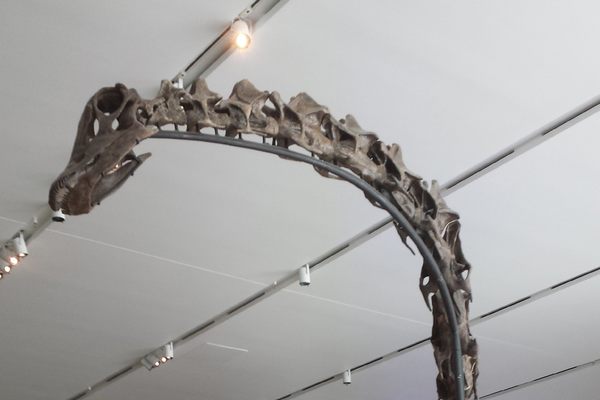About
For over a century the Gallery of Paleontology and Comparative Anatomy has been fascinating and terrifying visitors with its massive cram of reconstructed animal skeletons.
Established in 1898 in an effort to preserve a number of then-scattered scientific collections, the multi-floor galleries of fossils and bones present one of the most wide-ranging and comprehensive presentations of natural artifacts in the world.
The museum is divided into two separate galleries, each with a staggering collection. The Gallery of Paleontology is filled with amazingly complete fossils and most impressively, a number of massive dinosaur skeletons arrayed amongst the buildings ornate glass and iron architecture. Here too are the remains of weird and wonderful extinct, prehistoric beasts such as the Giant ground sloth, woolly rhinoceros, and many species of mammoth ranging from some the size of cows to others larger than today's elephants.
However, the real showpiece of the museum is the Gallery of Comparative Anatomy. In this section of the museum, over 1,000 animal skeletons are packed literally wall to wall in the massive gallery. The remains of each beast are faced in the same direction creating the illusion of an undead stampede as visitors enter the space. Horses, elephants, large cats and any number of other creatures are represented in the giant bone collection.
The Gallery of Paleontology and Comparative Anatomy is actually part of France's sprawling National Museum of Natural History which incorporates around 14 institutions around the country. While each site has its own focus an feel this may be the only part of the collective that features a skeleton stampede.
Related Tags
Community Contributors
Added By
Edited By
Published
February 21, 2014
Sources
- http://en.wikipedia.org/wiki/Galerie_de_pal%C3%A9ontologie_et_d%E2%80%99anatomie_compar%C3%A9e
- http://artandfossils.wordpress.com/2012/12/14/the-gallery-of-paleontology-and-comparative-anatomy-paris/
- http://en.parisinfo.com/paris-museum-monument/71346/Museum-national-d'Histoire-naturelle-Galeries-de-pal%C3%A9ontologie-et-d'anatomie-compar%C3%A9e




















